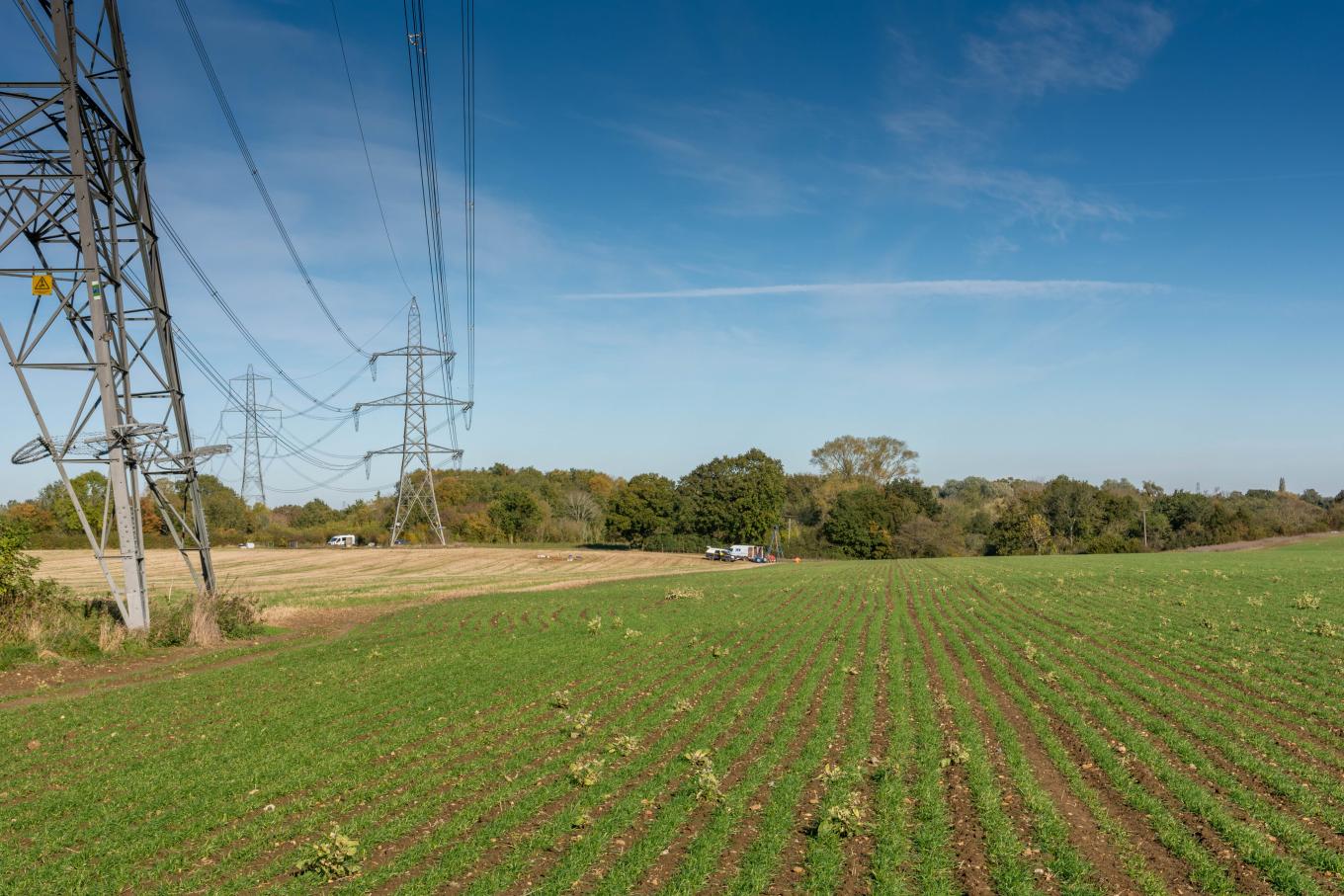Bramford to Twinstead Case Study

The Project
Bramford to Twinstead is a 29km network reinforcement, to the west of Ipswich and south of Sudbury on the Suffolk/Essex border. It is a key enabler to meeting the Government’s ambition to connect 40GW of offshore wind by 2030. It will provide much needed network capability to transport increasing renewable and low carbon energy from proposed offshore wind, interconnectors and new nuclear generation in East Anglia.
The proposals have been the subject of many rounds of public consultation since the requirement to reinforce the network was first identified around 2008. The final round of public consultation commenced at the end of January 2022, before an application for development consent later in 2022. You can read more about the latest consultation here.
Consultation feedback over many years has influenced the shape and evolution of our proposals, including the decisions to:
- Take down 25km of existing UK Power Networks 132kV line to make way for the proposed reinforcement.
- Put forward 10km of undergrounding where the new reinforcement would pass through Dedham Vale Area of Outstanding Natural Beauty and the Stour Valley.
- Remove a further 2.5km of existing transmission line.
How feedback is shaping our approach to consultation and engagement
Before non-statutory consultation in Spring 2021, we consulted the host local authorities about our proposed Consultation Strategy. Similarly, the host authorities were provided with a draft Statement of Community Consultation and comments were taken on board in the final Statement of Community Consultation ahead of the statutory consultation in Spring 2022.
Key amendments that were made to our approach in response to feedback have included:
- In response to host authority feedback about the local demographics and the ability of some sections of the local community to access information online, printed copies of feedback forms were included in the mailout to all properties within the Primary Consultation Zone (1km either side of the proposed corridor). Also included in the mailout were a newsletter and details about where to find more information, how to participate in the consultation, who to contact the project team and how to request printed copies of consultation materials.
- Discussions with host authorities helped shape our approach to which social media platforms might work best in the local area for geo-targeted social media advertising. Linking to our project website from host local authority websites hopefully also helped raise our digital awareness profile and increase footfall to our project website and online consultation materials.
- Deferring the start of statutory consultation from November 2021 to 25 January 2022 at the request of a local MP and host local authorities, so that some information about other network reinforcements in the region could be available at the same time. Commencement of the statutory consultation has therefore been aligned with information being made publicly available about East Anglia GREEN and Sea Link.
- Extending the duration of our statutory consultation from six to eight weeks at the request of the host local authorities.
- Given the Government Plan B restrictions that were in place in response to Covid and controlling the spread of the Omicron variant at the time of planning and advertising our statutory consultation, digital-first arrangements have been made for our statutory consultation. To ensure members of the local community have no less access to the project team to be able to ask questions, we increased the number of online webinars from two to ten. We also increased the number of days we are holding bookable ‘Ask the expert’ calls from five to ten days.
- In response to host authority and local MP requests for at least one face-to-face event (so that National Grid can appreciate the strength of local feeling) and the relaxation of Government restrictions relating to Covid, we are looking to schedule four additional face-to-face public exhibitions and two additional ‘ask the expert’ bookable session days in the local area during the statutory consultation period.
Outcomes
At non-statutory consultation in Spring 2021, the revisions to our approach helped generate a significant response to the public consultation.
Over the six-week consultation:
- Our social media advertising generated over one million impressions, driving 4,564 users to our project website.
- Eight local and national papers advertised, comprising 10 published notices and 134,000 digital impressions.
- 87 people attended our virtual events (including webinars, telephone surgeries and live chats).
- This activity resulted in 526 feedback responses from stakeholders and members of the local community– nearly two-thirds of which were printed hard copy feedback forms.
The diversity of the channels helped us to gain feedback from hard-to-reach areas which has enabled us to capture feedback on our plans.